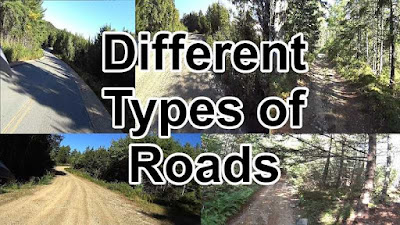Today we are going to discuss what are the different types of roads in India.
What do you mean by Road?
The road is an open and generally public way for the passage of vehicles, people, and animals. Pavement always finished with a tough smooth surface. The road is also known as Pavement.
This helped to make them durable and able to withstand the traffic and also the surroundings. The life span of the conventional road is between 25 -30 years.
Types of roads in India
Here are the different types of roads are as follows : –
Expressways
National Highways
State Highways
District Roads
Village Roads
Expressways
The expressway is one of the highways which does not allow the normal vehicles. we should maintain a speed of 120 KM/H on this expressway.
National Highways
The National highways construction and upgrading will be done by the NHAI (National Highways Authority of India). It operates beneath the Ministry of Road Transport and Highways.
The NHDP (National Highways Development Project) can be significant to expand and upgrade the network of national highways. NHAI uses a public-private partnership model for road development in India.
State Highways
State Highway or state road is taken care of by the state or provincial government. The states or provinces are divided into a country. A road by the state or province, falling below numbered national highways at intervals the hierarchy.
Route numbers unit of measurement accustomed aid navigation, and can or won't indicate possession or maintenance. A road is maintained by the state or province along with nationally-numbered highways and un-numbered state highways wishing on the state, pike might even be used for one meaning and state road or state route for the alternative.
The third meaning, used in some countries like New Zealand, uses the word ‘state’ in its sense of a nation.
By this, the main road is also a road maintained and numbered by the national government rather than native authorities.
District Roads
These area units major roads inside an area, connecting Taluka headquarters and major rural areas to district headquarters. They additionally connect with state highways and national highways. District roads area unit sub-classified into “Major District Roads” (MDRs) and “Other District Roads” (ODRs).
As per the broad classification of roads, the MDRs area unit to own a minimum breadth of fifteen meters (49 ft) with traffic density of five,000 to 10,000 railcar equivalents (PCUs). As of thirty-one March 2016, the whole length of district roads in India was around 561,940 kilometers (349,170 mi).
93% of the whole length was surfaced. The Zilla Parishads have the authority and responsibility to engineered district roads.
Village Roads
Village roads play a considerable role in the country’s road network, forming 70.23 % of the full of roads.
As of now, the share of unsurfaced village roads to the full village road length was 65.15% (excluding 900,000 kilometers) of village roads designed by the Jawahar Rozgar Yojana infrastructure program.
For the even of those rural roads, Pradhan Mantri Gram Sadak Yojana (Prime Minister’s Rural Roads Scheme) was launched in Dec 2000 by the Indian government to supply property to isolated rural habitations.
The theme envisions that these roads are going to be created and maintained by the village panchayats.
Credit: Expert Civil


No comments:
Post a Comment